Nebbiolo (Taste, Best Wines, Prices 2025)
Keen on discovering more about the Nebbiolo grape variety and the wines it produces?
Nebbiolo is the star grape behind the iconic Italian red wines of Barolo and Barbaresco. Like Pinot Noir, Nebbiolo is hard to grow, but it produces beautifully perfumed and age-worthy wines.
So, how are Nebbiolo wines made? Where did it originate? How do the wines taste?
Let’s explore all there is to know about Nebbiolo, including its history, food pairings, and wine regions. You’ll also find out The Best Wines To Buy In 2024 and The Easiest Way To Invest In Them.
Further reading
- Want to invest in some of the finest wines in the world? Explore our Ultimate Guide To Investing In Wine.
- And don’t miss out on these exotic Rose wines from around the world.
What is Nebbiolo?
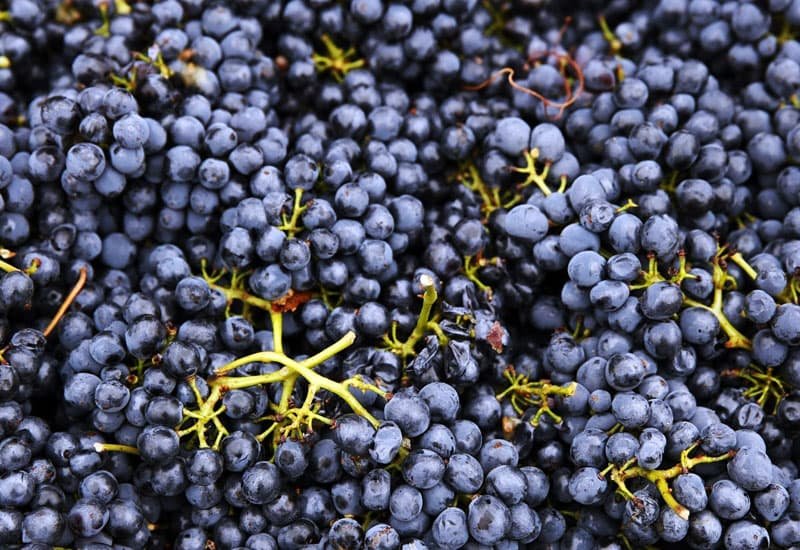
Nebbiolo is one of Italy’s most significant red grape varieties and is mainly produced in the Piedmont region.
Its name (pronounced “Nebby-oh-low”) originates from the Italian word for fog (nebbia), which is common during October when the grapes are harvested.
This grape variety is very responsive to its terroir. It can produce fascinating red wines with varying tannins, acidity, aroma, and flavor complexity depending on the vineyards’ climate and soil.
Let’s see how it all began.
Nebbiolo - A Brief History

The Nebbiolo grape variety is believed to have originated in Piedmont (Piemonte), Northern Italy, even though some believe the grape variety is native to Northern Lombardy.
The first official record of Nebbiolo wine dates back to the 13th century.
Back then, Nebbiolo produced a sweet red wine. That’s due to the late harvest period when the low temperatures halt fermentation. This resulted in higher residual sugar levels in the wine.
Over the following centuries, Nebbiolo gradually built a reputation as a high-quality vine.
Much later, in the 18th century, the British expressed interest in the fine Nebbiolo wines, but the lack of easy transportation from Italy to England kept the export quota very low.
Nebbiolo vineyard estates thrived until the 19th century, when most of them were hit by the phylloxera epidemic. Vineyard owners replaced some of their Nebbiolo plantings with other grape varieties like Barbera and Dolcetto that were easier to grow.
Today, Nebbiolo plantings in Piedmont constitute 8% of the total vineyard acreage.
Read more: Here’s how to make a peppy Mimosa and mix up a sensuous Sangria!
Nebbiolo Viticulture

Nebbiolo flowers early and is harvested late (in the second half of October), way after other grapes like Barbera and Dolcetto are collected and fermented.
This makes Nebbiolo hard to grow since the flowers in the spring might be affected by colder weather, and heavy rainfalls and humidity could damage the late-ripening grapes in the fall.
To prevent that, grape growers carefully choose the location of the Nebbiolo plantings. They’re usually located on southwest slopes with good drainage and lots of sunlight, which can aid the grapes’ ripening. The optimal altitude is 100-450 meters.
The grapes take on different characteristics depending on the soil type.
They thrive best in the calcareous marl near Alba - on the right bank of the Tanaro river (where Barolo and Barbaresco wines are made.) The Nebbiolo vine can also be grown on sandy soils or soils with a higher concentration of granite, porphyry, and schist, but they make less aromatic wines.
Read more: Meanwhile check out other exotic red wines like Chianti, Malbec, Châteauneuf-du-Pape, and Barbera.
Nebbiolo Winemaking
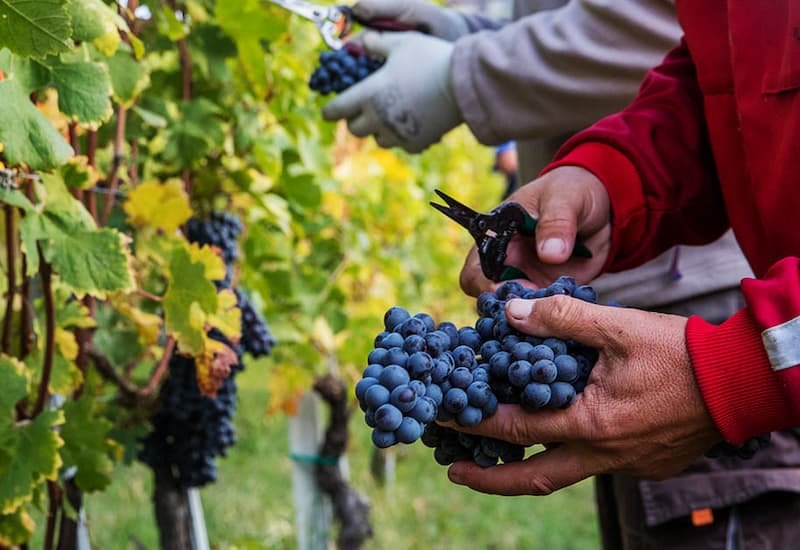
Nebbiolo winemaking is challenging due to the grapes’ characteristics. The traditional approach involves:
- Delayed fermentation: Since Nebbiolo grapes are harvested so late, the fermentation begins a few days later.
- Maceration period: The grape skins and juice stay together for longer than usual - typically 20-30 days.
- Aging: The high tannin levels require prolonged aging of at least five years in oak barrels.
In the past, traditional winemaking often led to poor hygiene. This resulted in the development of different bacteria that stripped the wine of its rich aromas and flavors.
That led to the development of the modern winemaking approach, which involves:
- Shorter maceration: Usually around 7-10 days
- Malolactic fermentation: This softens the wine’s acidity.
- Aging in smaller barrels: Allows for a shorter aging period in which the wine’s tannin levels are toned down.
This use of modern techniques allows winemakers to create more aromatic and flavorful Nebbiolo wines.
Read more: Want to try some of the most elegant white wines as well? Check out the aromatic Sauvignon Blancs, sweet Rieslings, and sparkling Pinot Blancs.
So, what does Nebbiolo wine taste like?
Nebbiolo Taste and Characteristics
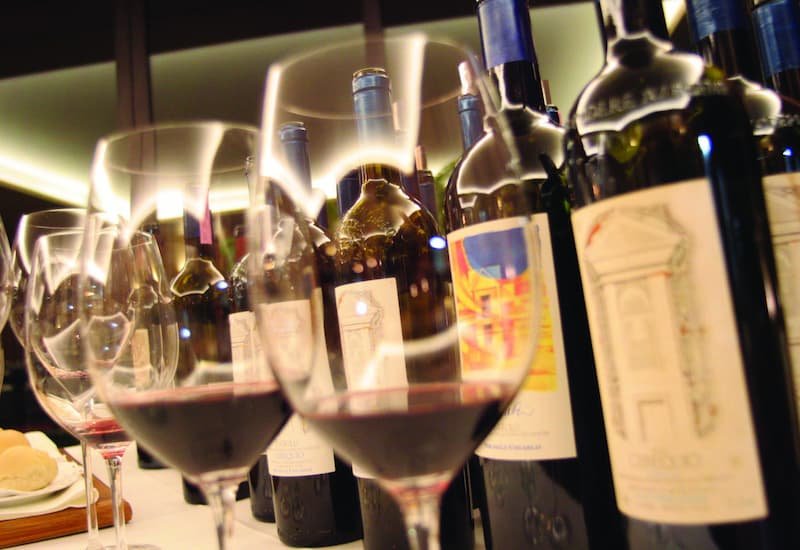
Nebbiolo based wines have a distinctive taste of earthy tar and elegant rose petal flavor. They have high tannin and acidity levels and rich aromas of raspberry, anise, and violet.
Another unique characteristic of the Nebbiolo wines is the change of color over time due to the red pigment oxidation. From a deep ruby red, the wine’s color fades to a brick-orange hue in just a few years after bottling.
Food Pairings with Nebbiolo Wine
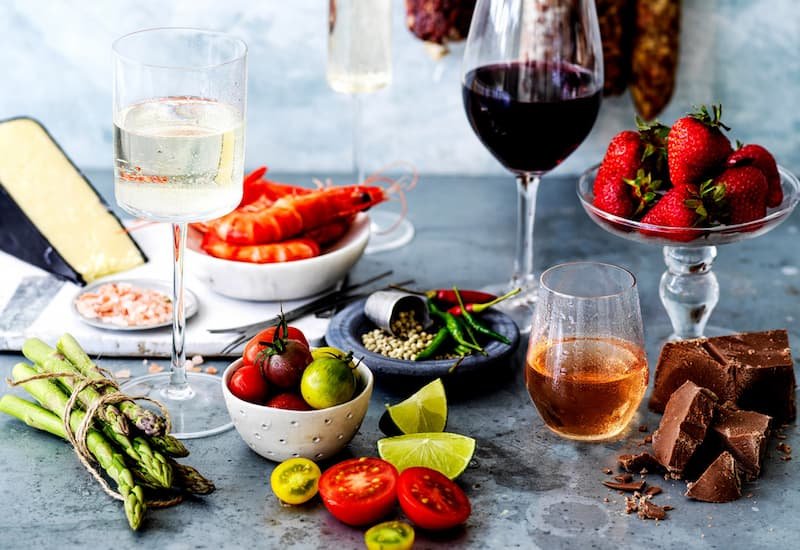
The high acidity of Nebbiolo wine can be balanced out with savory dishes rich in fats like butter or olive oil. You can pair a glass of beautiful Nebbiolo wine with juicy steaks, aged cheeses, or creamy pasta.
Serve your Nebbiolo in classic Burgundy wine glasses after decanting it for about 45 minutes to 2 hours.
Nebbiolo Wine Regions

Nebbiolo Wine Regions : Italy, United States, Australia, Other Regions
Nebbiolo wines from Italy are well known worldwide, but a few other regions also grow this fussy grape apart from Italy.
1. Italy
The Italian DOC and DOCG wine regions that produce Nebbiolo wines are:
- Barolo: This esteemed DOCG in Piedmont makes wine with 100% Nebbiolo grapes. These Nebbiolo wines follow rigorous quality control similar to the finest Burgundy Cru wines. The wine has to age in oak for at least 18 months and a total of three years before release.
- Barbaresco: The Barbaresco DOCG is the other emblematic appellation in Piemonte that produces wine with only Nebbiolo grapes. Here, the wine is aged in oak barrels for at least nine months and a total of two years before release.
- Langhe: The Langhe Nebbiolo DOC combines various soils and terrain of valleys and hillsides. This DOC produces some great Nebbiolo wines, especially in the drier seasons.
- Roero: This DOC inside the Langhe region produces softer wines with at least 95% Nebbiolo grapes.
- Alto Piemonte: In this DOC, Nebbiolo grapes are often blended with other red grape varieties like Vespolina and Croatina.
- Nebbiolo d'Alba: This DOC is near the town of Alba and produces still (dry and sweet) and sparkling wines with 100% Nebbiolo grapes.
- Ghemme: The wines from this DOC are produced in the low foothills near the Sesia river. They’re light with subtle floral aromas and a mineral aftertaste.
- Gattinara: This DOCG produces Nebbiolo wine that is locally known as Spanna. The wines from this region can age just as beautifully as some of the finest Barolo wines.
- Valtellina: Valtellina Superiore DOCG wine made from Nebbiolo (also called Chiavennasca by the locals) is made using the same grape-drying technique as the region’s emblematic Amarone wine.
- Valle d'Aosta: In the low Aosta valley near the border with France, Nebbiolo is called Picotener and has a distinctive light floral aroma.
2. United States
Nebbiolo vines are mainly planted in California, but they’re also grown in Washington and Oregon. You can find these New World Nebbiolo wines as a varietal or in a blend with Syrah or Dolcetto.
3. Australia
Nebbiolo thrives in the cooler climate regions of Australia, especially Victoria and New South Wales. Nebbiolo wines from Australia are fruity and very aromatic with bright floral aromas.
4. Other Regions
Smaller Nebbiolo wine regions can be found in Mexico, Argentina, Chile, and Austria as well.
So, which are the best Nebbiolo wines you should buy in 2024?
The Best Nebbiolo and Other Wines to Buy in 2024
Get hold of these Nebbiolos for your wine collection:
1. Giacomo Conterno Monfortino 1997
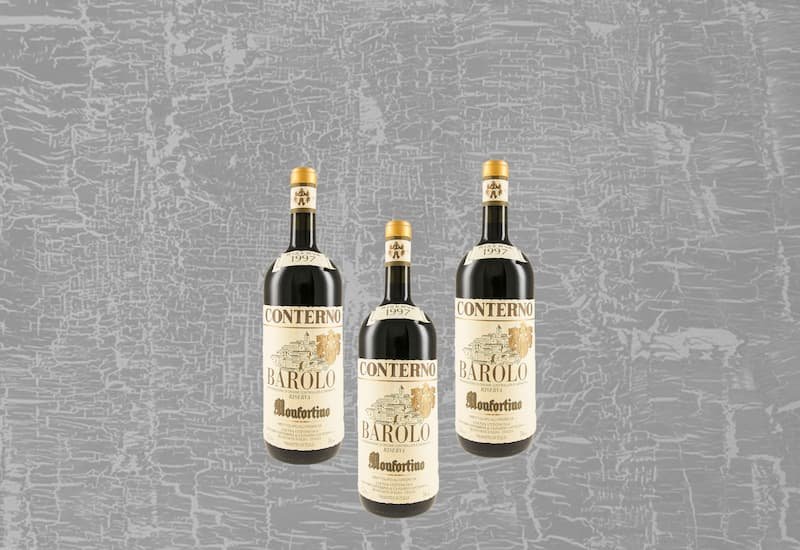
This classic Barolo wine has high tannin and acidity levels complemented by an alcohol content of 14%. Every sip of this beautiful Nebbiolo wine is accompanied by a rich raspberry aroma and a distinct leathery aftertaste with a long-lasting oaky flavor.
Price of Giacomo Conterno Monfortino 1997: $1,322
2. Bartolo Mascarello Barolo Riserva 1961
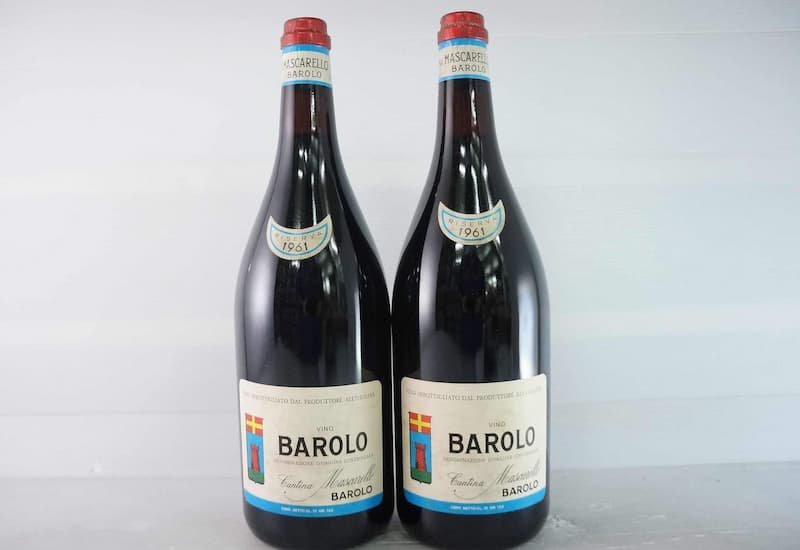
Here’s one of the most popular Barolo wines from the rare 1961 vintage. The wine has the signature tar and roses flavor accompanied by coffee undertones and herbal aroma.
Price of Bartolo Mascarello Barolo Riserva 1961: $1,103
3. Gaja Sori San Lorenzo Langhe-Barbaresco 2016
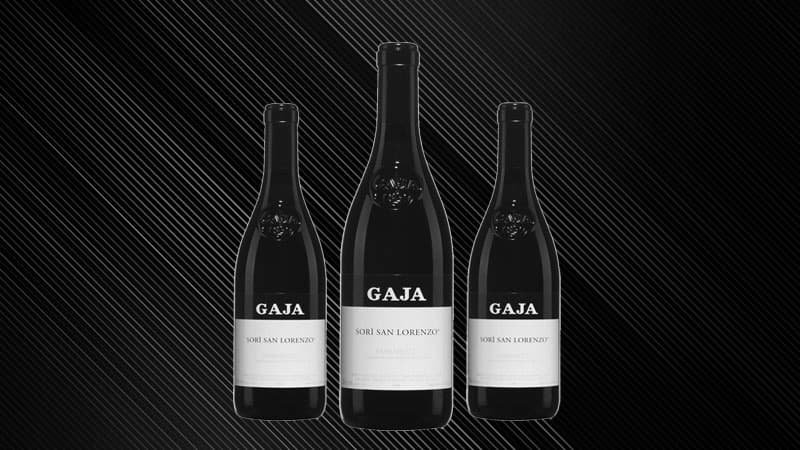
This Barbaresco is made in the Langhe region of Italy. This elegant dry red wine has dominating strawberry and red cherry flavors with vanilla and smoke undertones.
Price of Gaja Sori San Lorenzo Langhe-Barbaresco 2016: $523
4. Roagna Crichet Paje Barbaresco DOCG 1999

This is a rare Barbaresco wine from the heart of Piemonte. It has dried fruit, cherry, and truffle flavors combined with an aroma of oak and chocolate.
Price of Roagna Crichet Paje Barbaresco DOCG 1999: $1,100
5. Falletto di Bruno Giacosa 'Le Rocche di Castiglione Falletto' 1978

This exquisite Barolo wine has grown in popularity over the years because of its rich herbaceous aromas and delicious taste. It has enigmatic flavors of thyme, mint, licorice, truffles, red fruit and dried cherry.
Price of Falletto di Bruno Giacosa 'Le Rocche di Castiglione Falletto' 1978: $1,340
6. Poderi Aldo Conterno Granbussia 1978
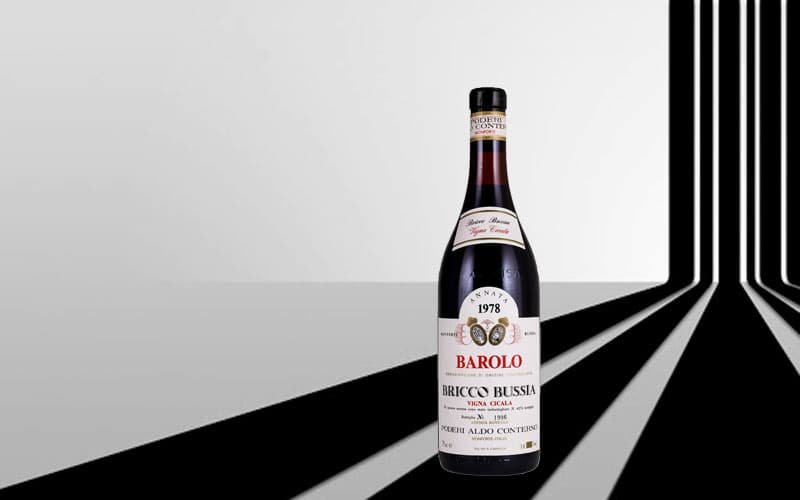
This Barolo Riserva Italian wine has developed a well-rounded flavor profile over the years. It has softer tannins and a well-preserved high acidity. Its typical cherry and red fruit flavors are accompanied by rich tobacco, leather, and oak undertones.
Price of Poderi Aldo Conterno Granbussia 1978: $1,353
7. Giuseppe Mascarello e Figlio Monprivato Ca d'Morissio 1996
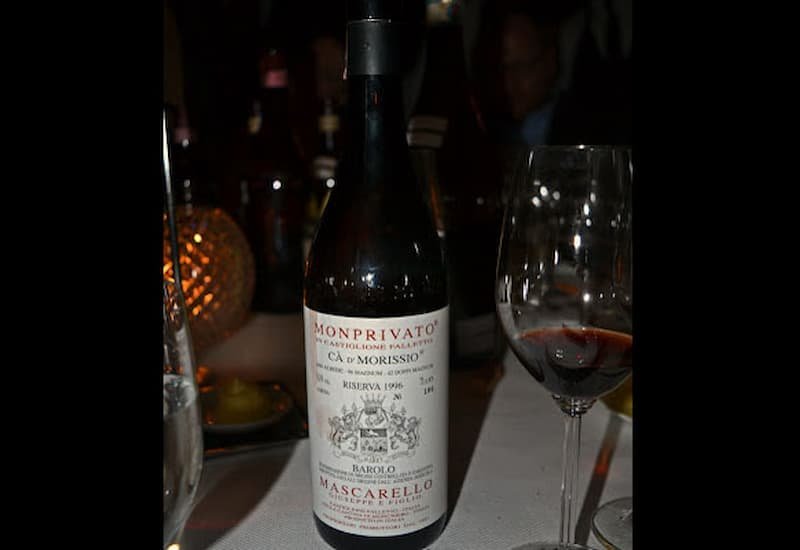
This rich and complex Barolo wine is from the legendary vintage of 1996. The wine has developed aromas of smoked licorice and tart blackberry with earthy undertones.
Price of Giuseppe Mascarello e Figlio Monprivato Ca d'Morissio 1996: $822
8. Cappellano Otin Fiorin Pie Franco - Michet 1996
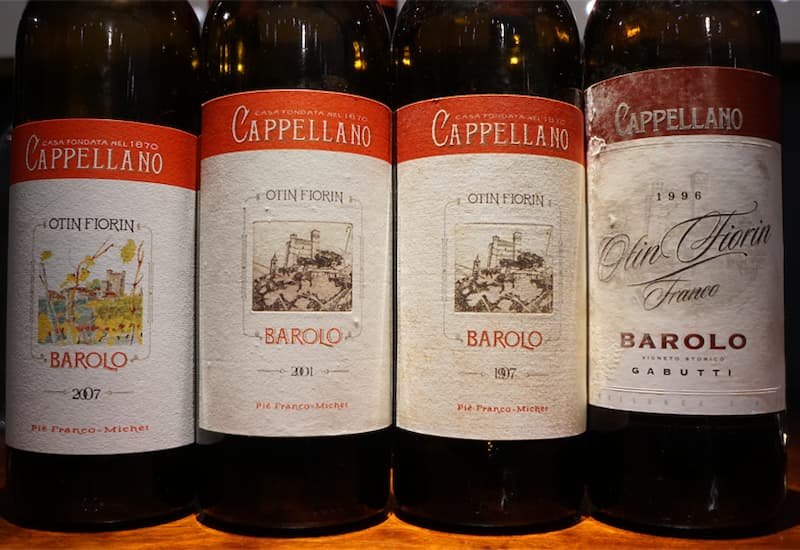
This is another well-preserved Barolo that has developed complex aromas and superior tasting notes. It develops a delicious red fruit flavor with a long-lasting tar, sandalwood aftertaste, and a hint of smoke on the palate.
Price of Cappellano Otin Fiorin Pie Franco - Michet 1996: $1,097
9. Luciano Sandrone 'Vite Talin' 2013
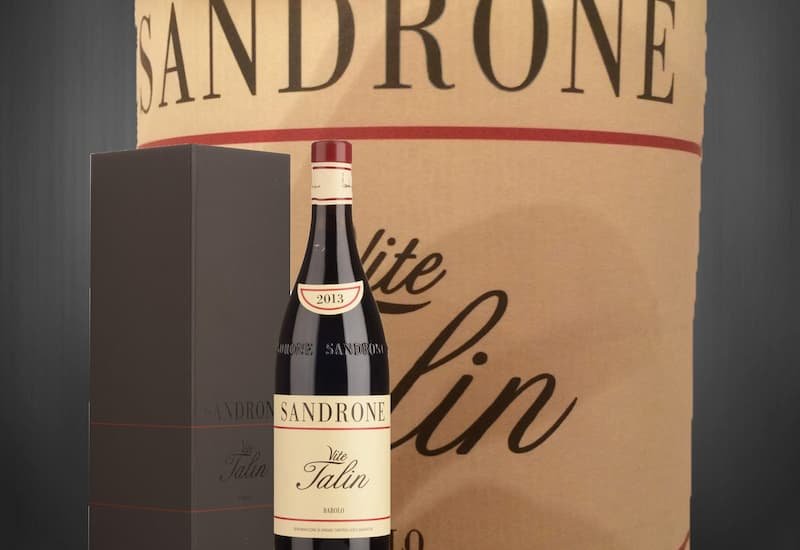
This Nebbiolo wine is dry with a chalky tannin taste that is the perfect match for creamy pasta or savory lamb dishes. It has good acidity accompanied by an elegant nose of rose petal aromas and distinct raspberry flavors.
Price of Luciano Sandrone 'Vite Talin' 2013: $574
10. Giuseppe Rinaldi Barolo DOCG 1978
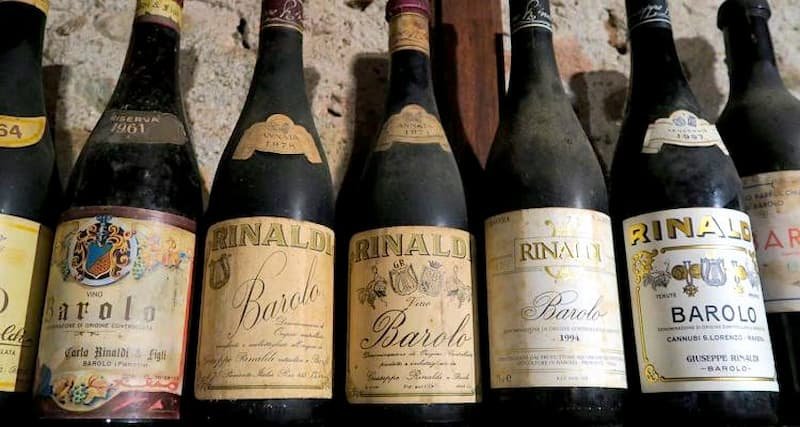
This beautifully aged Barolo is pure joy in a bottle! Every sip of this Nebbiolo wine brings out flavors of sour cherry, tar, and strawberry with subtle earthy undertones.
Price of Giuseppe Rinaldi Barolo DOCG 1978: $918
Next, let’s see how to recognize which Nebbiolo wines are investment-worthy.
Investing in Nebbiolo Wines
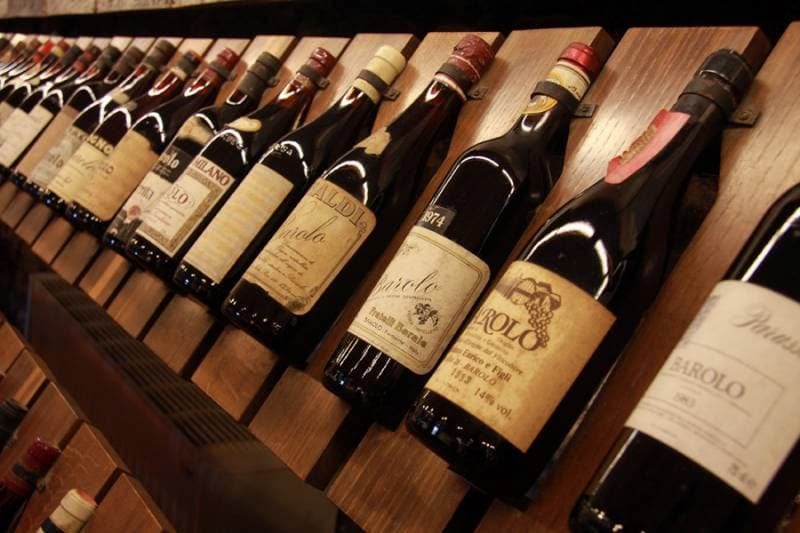
The most promising Nebbiolo wines worthy of investing are the Barolo and Barbaresco DOCG wines. They can age beautifully for up to 20 years, and wines from superior vintages can age up to 25-30 years.
The prices of the best vintages tend to appreciate over the years. For example, the Giacomo Conterno Monfortino jumped 25% in value during the period 2018-2019, and 85% since 2014.
Nebbiolo wines also perform extraordinarily well at auctions. For example, at a 2015 auction in Italy, 11 bottles of Bruno Giacosa 1971 Barolo Rocche di Castiglione Falletto were sold at $21,473.
In another auction of Barolo wines in Italy in 2019, a Giacomo Conterno Barolo bottle from the 1990 vintage was sold for a remarkable $1,963.So, how can you get your hands on a fine bottle of Barolo or Barbaresco without having to wait for the next big auction?
Here’s how:
Invest in Nebbiolo and Other Fine Wines Through Vinovest

Vinovest is a leading wine investment platform that lets you invest in sought-after wines from all around the world, whether you’re looking for a classic Nebbiolo, Chardonnay, or a rare Screaming Eagle.
Moreover, Vinovest will store, sell, authenticate, and deliver your wines to you whenever and wherever you want.
How Does it Work?
To get started on the Vinovest platform, you just have to:
- Sign up
- Complete a quick questionnaire so that Vinovest can determine your investment preferences.
- Add a minimum of $1,000 to your account.
- Grow an impressive wine portfolio from the comfort of your home.
Benefits
Vinovest comes with lots of benefits like:
1. Easy Buying and Selling Using AI-driven Technology
You can buy sweet white wines like Ice Wine, sweet reds like Lambrusco, or unique Tempranillo wines with just a few clicks. You can also choose to sell your bottles at any time on the AI-based platform, where you’ll be matched with the highest price buyer.
2. Best Prices
Vinovest sources its wines directly from top wineries, global wine exchanges, and trusted wine merchants, so you get your wines at below-retail prices.
3. Optimal Storage and Safety
Your wines are stored in bonded warehouses near some of the best wine regions in the world. Every bottle is safely stored in a controlled environment with the right temperature, light, humidity, and vibration levels.
4. Portfolio Curated by an Expert Wine Advisory Team
You don’t have to be a wine expert to build a successful portfolio. A team of Master Sommeliers and data scientists helps you build a successful portfolio of investment-grade wines.
5. Authenticity and Provenance
Never worry again about receiving a counterfeit bottle! Vinovest goes the extra length to trace the bottle’s provenance and check its authenticity before you buy it.
6. Easy Delivery
Want to drink the Cabernet Sauvignon you just bought? Just let Vinovest know where and when to deliver your bottle, and they’ll handle the shipping.
7. Deep Network
With Vinovest, you get access to limited releases of new wines, private wineries, and upcoming vineyards. You can also join wine tastings with Vinovest’s Master Sommeliers!
Ready to Build A Fine Wine Collection?
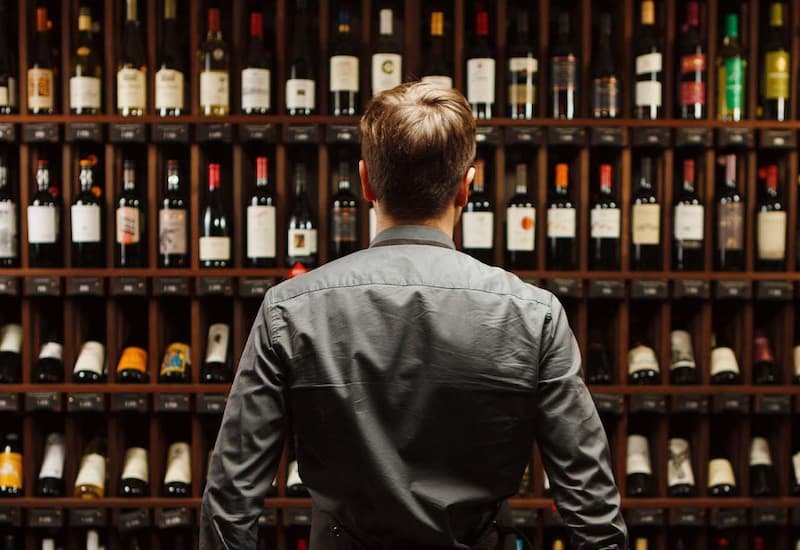
Nebbiolo is the grape behind some of the most unique Italian wines with great aging potential that are definitely worth your collection!
Whether you want to add a Nebbiolo wine to your investment portfolio or you want to have it for your next big gathering, Vinovest can help you get access to some of the best bottles out there, hassle-free!
So, sign up, explore your opportunities, and start building your wine collection today!



